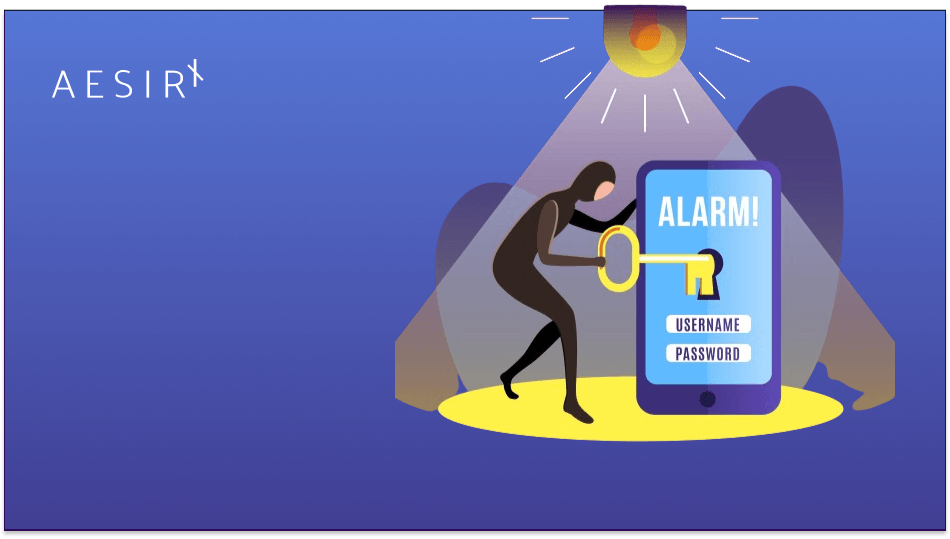Picture waking up one morning to find your bank accounts empty, your credit cards maxed out, and your online identity under attack.
Sadly, this nightmare is a reality for millions worldwide due to identity theft.
In the U.S. alone, the Federal Trade Commission received 800,000 reports of identity theft in 2023's third quarter [1].
But don't worry!
In this blog, we'll teach you how to spot identity theft signs and give practical tips to protect your digital self.
Plus, we'll introduce AesirX Shield of Privacy – a new tech solution powered by Concordium blockchain to help you regain control of your online identity and personal data.
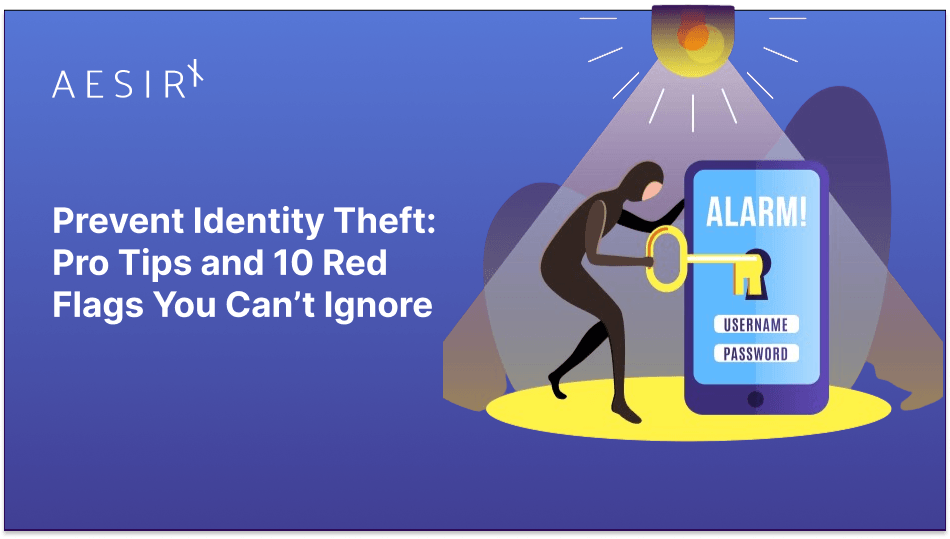
Understanding Online Identity Theft
Identity theft is a serious issue that can devastate your finances and personal life. It involves criminals using your personal information without your permission to commit fraud or other crimes.
Your online identity includes all the personal information you share on the internet, such as your email address, date of birth, bank details, and online shopping habits. Verification methods like passwords, facial recognition, and fingerprints confirm your identity and allow access to various online services.
With the advent of digital platforms like social media and online shopping sites, your personal data has become more accessible. This ease of access makes it easier for cybercriminals to exploit your information.
Every online interaction leaves digital footprints. Companies collect massive amounts of data, often more than is necessary, which can become a gold mine for identity thieves if these databases are breached.
Additionally, cybercriminals may try brute force attacks, where automated software attempts numerous combinations of usernames and passwords until they gain unauthorized access to an account. This method is especially effective if users have weak or easily guessable passwords.
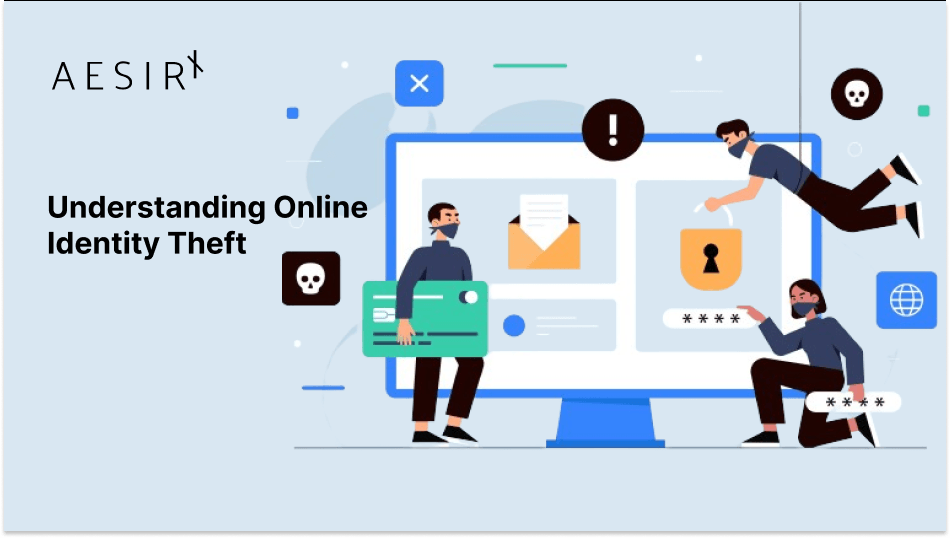
The Red Flags of Identity Theft
Recognizing the signs of identity theft is the first step towards protecting yourself. Here are ten red flags you should not ignore:
1. Strange Activity in Your Bank Account
Keep an eye out for any unusual changes in your bank statements. Even small withdrawals you don't remember making could be a sign that someone is testing to see if they can access your money.
2. Tricky Emails or Messages
Be careful with emails or messages that ask for personal information, like your password or credit card details. Sometimes, they look real but are actually traps set by scammers trying to steal your information.
3. Unexpected Password Changes
If you get emails saying your passwords were changed, but you didn't do it, someone might be trying to hack into your accounts.
4. Weird Stuff on Your Credit Report
If you see things on your credit report that you don't recognize, it could mean someone is using your info without your permission.
5. Odd Things Happening on Social Media
If you notice strange activity on your social media accounts, like posts you didn't make or messages you didn't send, your account might be hacked.
6. Getting Notified About Data Breaches
If a company tells you there's been a breach and your information might have been exposed, take action right away.
7. Missing Mail
If you're not getting your bills or statements in the mail, someone might be stealing them to get your info.
8. Unexpected Rejections
If you're getting turned down for things like credit cards or services for no reason, it could mean someone else is using your identity.
9. Dealing with Ransomware or Malware
These are nasty programs that can mess with your personal information on your computer.
10. Strange Things in Your Browser History
If you see websites you don't remember visiting in your browser history, someone else might be using your computer.
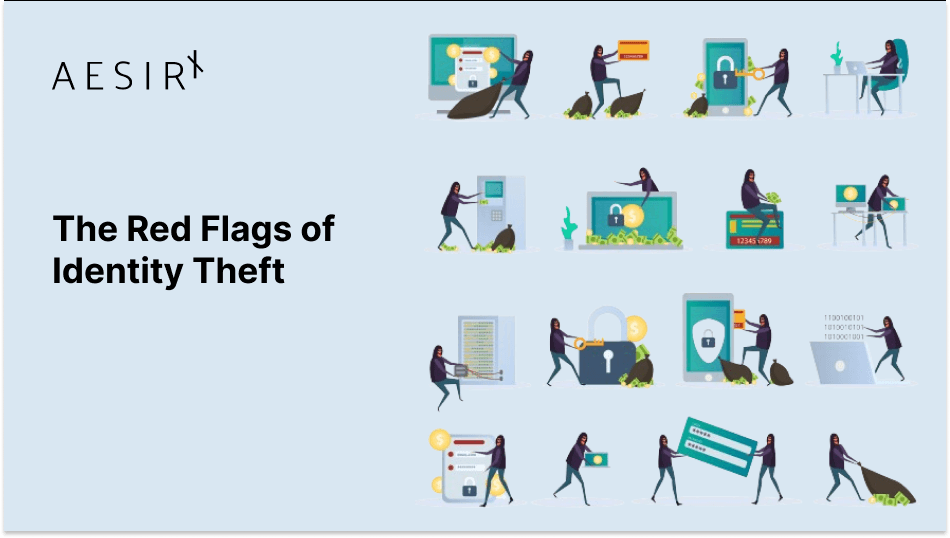
Proactive Measures for Identity Theft Prevention
Protecting yourself from identity theft requires vigilance and proactive steps. Here are some key measures you can take to safeguard your digital identity:
1. Strong Passwords and Authentication
Use complex passwords and enable two-factor authentication. This basic step can significantly enhance your security online.
2. Monitor Financial Statements
Keep an eye on your financial activity for unauthorized transactions. Early detection is key to preventing significant damage.
3. Be Mindful Online
Share personal information sparingly and only on secure websites. Be aware of the information you're sharing and who might have access to it.
4. Use Privacy Tools
Choose technology to boost your privacy, such as AesirX Shield of Privacy to protect you online and so that you have full control over your digital footprint. With it, you determine how and where your personal data is used, manage interactions, and specify the duration of access.
5. Use Single Sign On
Use Single Sign On (SSO) for easy and secure access to all your accounts. With AesirX SSO, you only need one set of login credentials, or try passwordless login with a web3 wallet for added security and simplicity.
6. Get Decentralized
Centralized systems have weaknesses because they rely on a single point of control, making them vulnerable to failures and data breaches. Decentralized solutions, like blockchain-based platforms, spread data across many points, reducing the risk of a single failure. This improves security and privacy, putting you in charge of your online presence and protecting your sensitive information from unauthorized access.
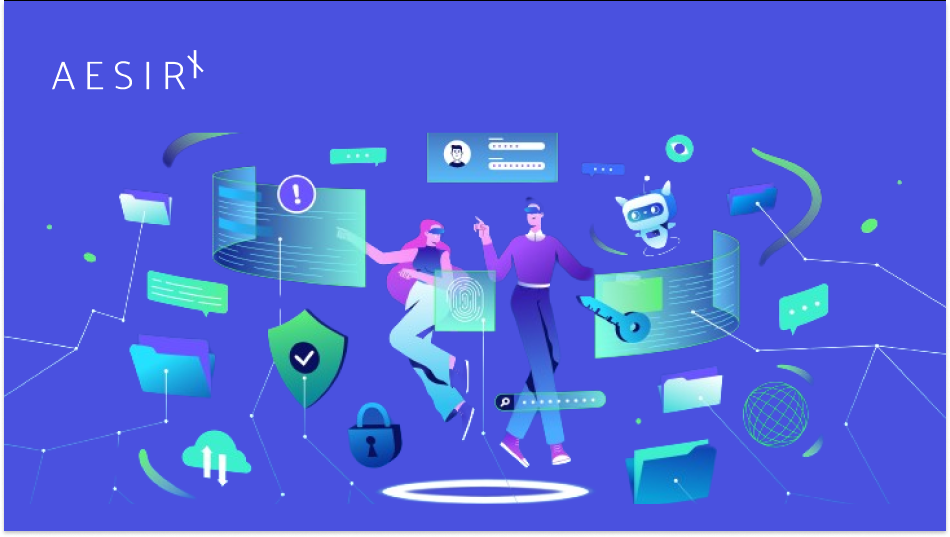
Protecting Your Identity with AesirX Shield of Privacy
AesirX Shield of Privacy is a leading tool in identity theft protection for individuals and businesses. It’s a decentralized identity management solution powered by Concordium blockchain using ZKP and ID tech to boost privacy and security on the internet.
The blockchain ensures security, ZKP ensures privacy, and ID tech protects your digital identity. This combination helps prevent identity theft by ensuring that personal data is not exposed during transactions and that identities are verified without revealing sensitive information.
AesirX Shield of Privacy acts like a digital passport for the internet, letting you create, own, and control your digital identity. With its 4-tier decentralized consent model, ranging from short, 30-minute session-based consent to fully decentralized options using Web3 Wallets, you have full control over your data. Grant or revoke consent for data collection and processing at any time, all while blockchain encryption ensures your information remains secure and inaccessible to hackers.
AesirX SSO is also one of AesirX's privacy and security tools. It simplifies the login process, allowing you to use a single password to securely log into multiple websites and apps. You don't have to remember a lot of passwords, so there's less chance of them getting stolen. When combined with AesirX Shield of Privacy and Concordium, it offers a more secure login process using cryptography and blockchain verification, surpassing traditional methods like email, passwords, and social media logins.
Safeguarding your financial and personal security starts with protecting your identity. By understanding the warning signs of identity theft and taking proactive steps, you can greatly reduce the risk of becoming a victim. Stay alert, regularly check your online accounts, and consider using innovative tools to strengthen your online privacy and security.
Try AesirX Shield of Privacy and AesirX SSO for free to protect your identity. Don't wait; protect yourself now!
Sources:
